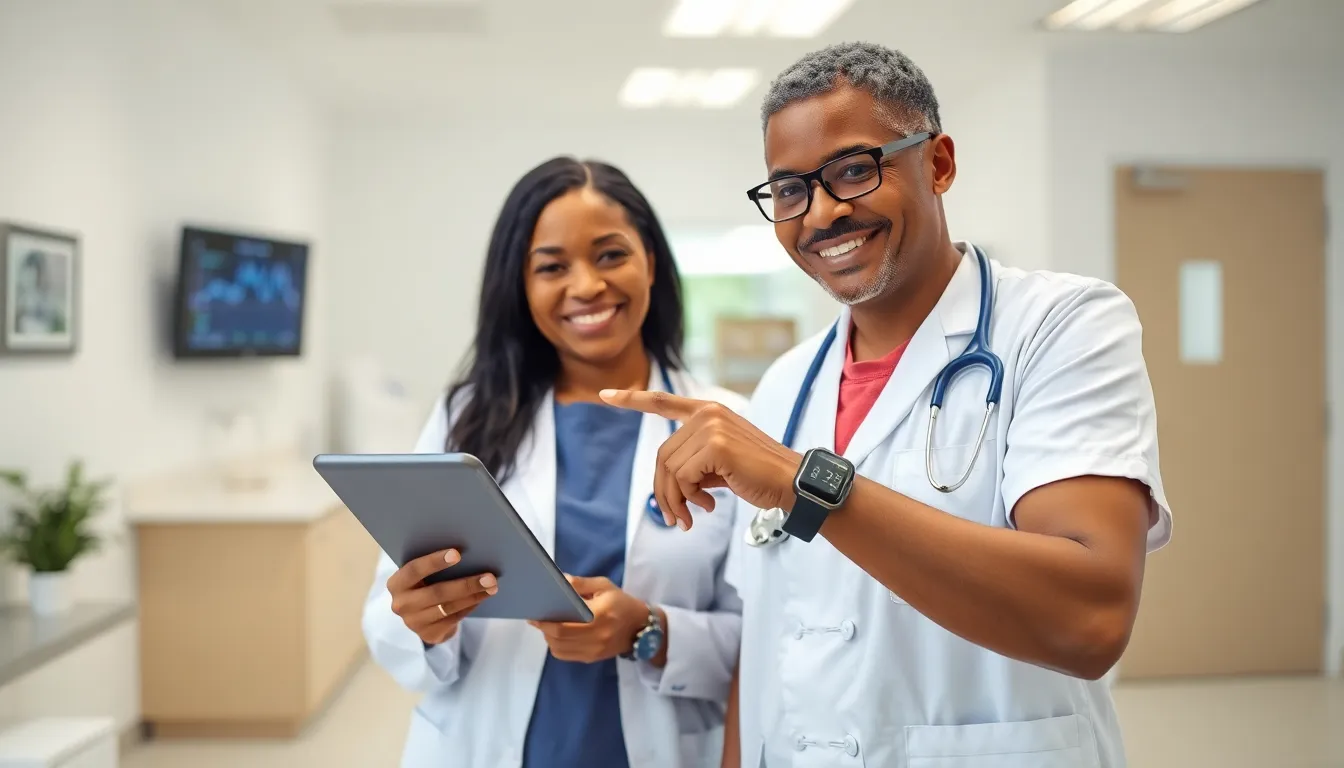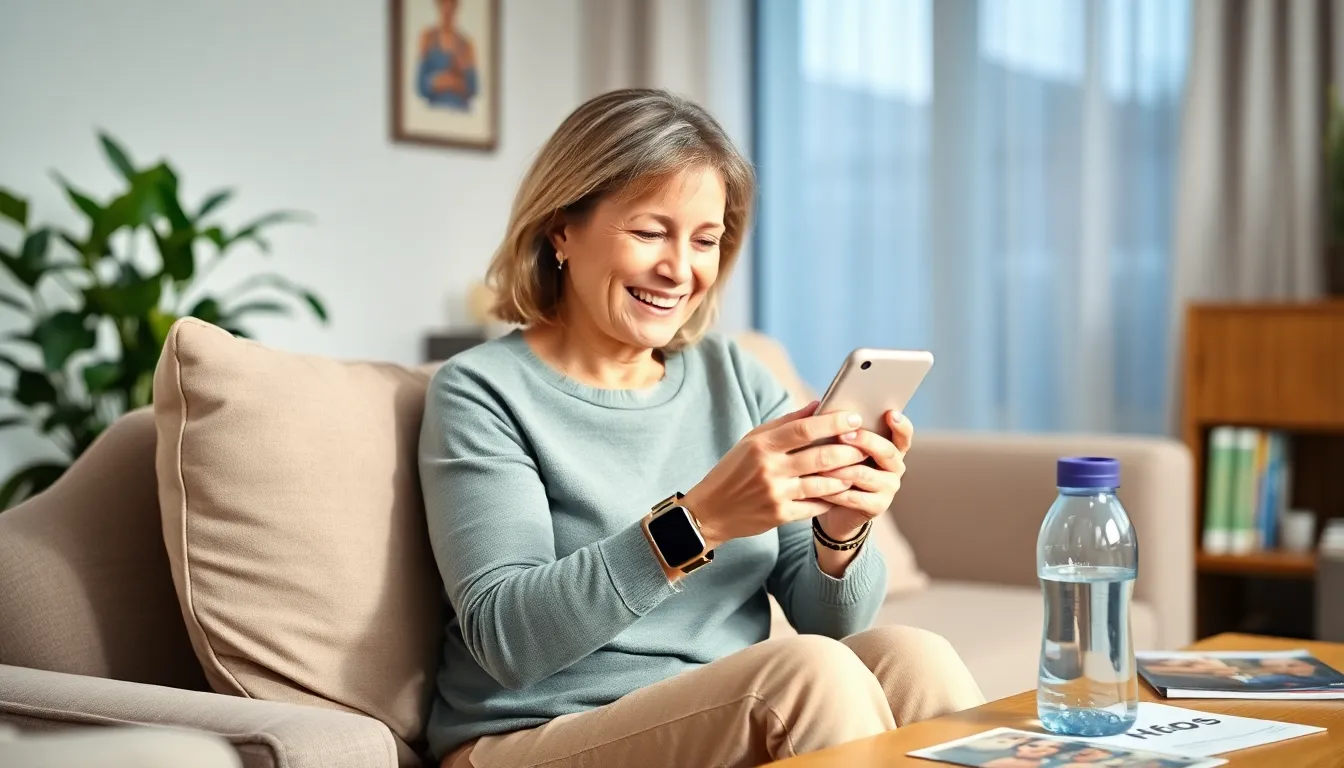In a world where everyone’s glued to their screens, why not let technology keep an eye on your health too? Remote patient monitoring is the superhero of modern medicine, swooping in to save the day from endless waiting rooms and long commutes. Imagine having your doctor’s watchful eye on you from the comfort of your couch—no cape required!
This innovative approach allows healthcare providers to track vital signs and health metrics in real-time, making it easier than ever to manage chronic conditions. With devices that fit right into your daily routine, patients can enjoy a seamless blend of convenience and care. So, while you binge-watch your favorite show, your health could be getting a boost. Who knew that staying healthy could be this easy and entertaining?
Table of Contents
ToggleOverview of Remote Patient Monitoring
Remote patient monitoring enhances healthcare by allowing continuous tracking of patients’ vital signs and health metrics. This approach increases accessibility and streamlines chronic condition management.
Definition and Importance
Remote patient monitoring refers to the use of digital technologies to collect patient health data outside of traditional healthcare settings. It’s crucial for improving patient engagement, providing timely interventions, and reducing hospital visits. This method supports proactive healthcare, enabling providers to respond quickly to changes in patient health. Monitoring vital signs from home increases convenience and comfort for patients. By shifting some aspects of care to a digital platform, healthcare can become more patient-centered and efficient.
Key Components of Remote Patient Monitoring
Key components include devices for vital sign measurement, software for data transmission, and platforms for data analysis. Wearable devices collect heart rate, blood pressure, and glucose levels. Mobile applications facilitate real-time communication between patients and providers. Data analytics tools interpret the monitored information, flagging abnormalities for follow-up actions. Integration with electronic health records ensures seamless data sharing, enhancing overall care coordination. These components collectively enable a comprehensive view of a patient’s health status.
Benefits of Remote Patient Monitoring

Remote patient monitoring offers numerous advantages that enhance healthcare delivery and patient management. These benefits include improved patient outcomes and enhanced patient engagement.
Improved Patient Outcomes
Data from remote patient monitoring demonstrates significant improvements in patient outcomes. Chronic conditions such as diabetes, hypertension, and heart disease see better management through continuous monitoring. Real-time tracking of vital signs allows healthcare providers to identify problems quickly. Early detection of health issues leads to timely interventions, decreasing hospital readmissions. Research indicates that remote monitoring can reduce hospitalizations by up to 30%, affording patients better management of their conditions. Consistent feedback helps healthcare teams adjust treatment plans effectively, ensuring alignment with individual patient needs.
Enhanced Patient Engagement
Patient engagement improves significantly with remote patient monitoring solutions. Interactive technology encourages patients to take an active role in their health. Wearable devices and mobile applications provide instant access to personal health data. This constant connection fosters accountability, motivating patients to stick to their treatment regimens. Studies reveal that engaged patients are more likely to follow their care plans, leading to enhanced satisfaction and better health outcomes. Access to real-time information empowers patients to communicate effectively with their healthcare providers, creating a collaborative approach to care.
Challenges in Remote Patient Monitoring
Remote patient monitoring presents various challenges that could hinder its effectiveness and adoption. Addressing these obstacles involves understanding the underlying issues.
Technology Barriers
Technical limitations often impede remote patient monitoring. Not all patients possess reliable internet access, creating disparities in health data capability. Some devices may lack user-friendly interfaces, complicating usage for individuals unfamiliar with technology. Integration with existing health systems sometimes falls short, resulting in fragmented data management. Additionally, devices may be incompatible with certain software, disrupting data continuity. Reducing these barriers requires investment in accessible technology solutions and user training.
Data Privacy Concerns
Data privacy poses significant concerns in remote patient monitoring. Patients remain hesitant about sharing sensitive health information due to fears of breaches. Cybersecurity threats continually evolve, targeting vulnerable healthcare data. Compliance with regulations like HIPAA adds complexity to data management, potentially discouraging healthcare providers from utilizing remote monitoring technologies. Building trust through robust security measures and clear communication about data usage helps alleviate these concerns. Securing patient data remains critical for fostering widespread adoption of remote monitoring solutions.
Future Trends in Remote Patient Monitoring
Emerging trends are shaping the future of remote patient monitoring, focusing on enhancing patient care and streamlining healthcare delivery.
Integration with Telehealth
Telehealth integration is crucial for the evolution of remote patient monitoring. This synergy allows healthcare providers to conduct virtual consultations seamlessly while monitoring patient data in real time. Patients benefit from immediate feedback and adjustments to treatment plans during telehealth sessions. The combination enables comprehensive care management, particularly for chronic conditions. Efficiency improves as providers can quickly address health concerns using data collected remotely, significantly enhancing patient engagement. This integration promotes proactive healthcare by supporting timely interventions, reducing the need for in-person visits.
Advancements in Wearable Technology
Wearable technology continues to evolve, significantly impacting remote patient monitoring. Devices such as smartwatches and fitness trackers now offer advanced features for tracking vital signs like heart rate, oxygen saturation, and sleep patterns. These innovations allow for continuous monitoring of patient health in a non-invasive manner. Newer devices include more accurate sensors, optimizing data collection and analysis. They also sync with mobile applications, offering insights into one’s health journey. Accessibility increases as these wearables become increasingly affordable, broadening their availability for diverse patient populations. Enhanced features in wearables foster greater patient accountability and connection to their health outcomes.
Remote patient monitoring is reshaping the healthcare landscape by offering a blend of convenience and proactive care. With real-time tracking and data analysis, patients can engage more actively in their health management. This technology not only improves outcomes for chronic conditions but also fosters a deeper connection between patients and healthcare providers.
Despite challenges like technology barriers and data privacy concerns, the potential for remote monitoring to enhance patient care is immense. As innovations continue to emerge and integration with telehealth becomes more seamless, the future of healthcare looks promising. Investing in accessible solutions and robust security measures will be essential for widespread adoption, ensuring that patients receive the best possible care.

